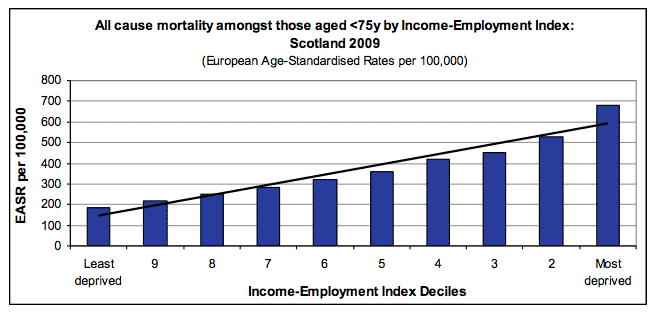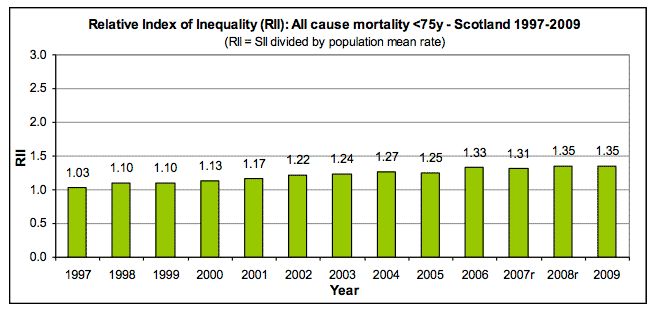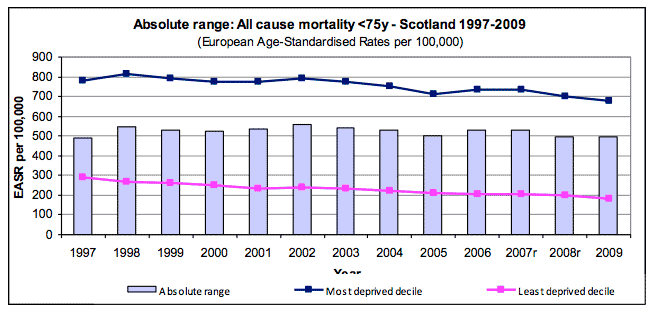Long-Term Monitoring of Health Inequalities
An annual report which summarises the long-term differences in health trends between the least and most deprived areas of Scotland.
This document is part of a collection
Premature Mortality - from all causes, aged under 75 years
Summary
- Inequalities are stable in absolute terms but are widening in relative terms
Between 1997 and 2009, deaths amongst those aged under 75 years have decreased by 24.9%. Despite these decreases, around 21,200 people aged under 75 still die each year. Deaths in this age group are more common in deprived areas than in areas of low deprivation. In 2009, under 75 deaths amongst those living in the most deprived decile were 3.7 times more likely than those living in the least deprived decile. Recent reductions in premature mortality have been observed across the population. Whilst inequalities have been stable in absolute terms (as demonstrated by the absolute range), improvements observed in deprived areas have not been as great as those observed elsewhere in Scotland resulting in a widening of inequalities in relative terms (as demonstrated by the overall increase in RII).
Inequalities gradient in the most recent year available

Relative Index of Inequality ( RII) over time

Absolute range over time

Scale / context
| Number of deaths | Target population size | Rate per 100,000 ( EASR) | |
|---|---|---|---|
| 1997 | 26,081 | 4,740,269 | 485.5 |
| 1998 | 25,857 | 4,729,975 | 479.8 |
| 1999 | 25,491 | 4,721,298 | 471.6 |
| 2000 | 24,593 | 4,708,667 | 454.1 |
| 2001 | 24,168 | 4,703,661 | 446.2 |
| 2002 | 24,219 | 4,690,508 | 443.8 |
| 2003 | 23,789 | 4,690,603 | 431.4 |
| 2004 | 22,896 | 4,706,922 | 411.6 |
| 2005 | 22,441 | 4,718,403 | 401.0 |
| 2006 | 22,237 | 4,734,676 | 395.8 |
| 2007 1 | 22,359 | 4,755,963 | 393.4 |
| 2008 1 | 22,005 | 4,775,321 | 382.8 |
| 2009 | 21,229 | 4,816,465 | 364.8 |
1. The 2007 and 2008 data has been revised since the publication of the October 2010 report.
There is a problem
Thanks for your feedback